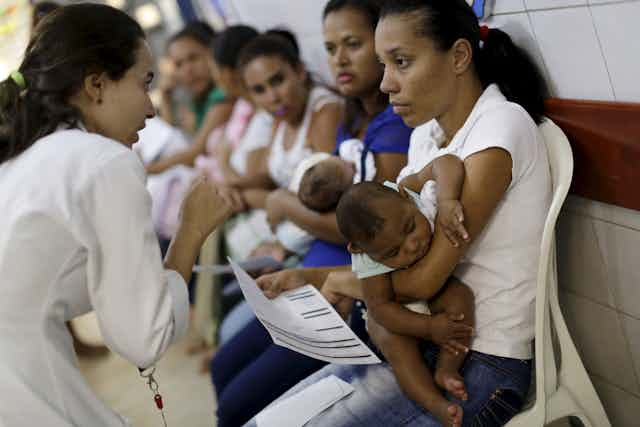Just under a quarter of the world’s five-year-olds suffer from child stunting. A little more than half of all these stunted children live in Asia and more than one third in Africa.
Children are considered stunted if they are too short for their age by the time they turn five. It’s the result of poor nutrition in the first 1,000 days of a child’s life. It is irreversible and associated with impaired cognitive ability and reduced school and work performance later in life.
Stunting has declined in the last 24 years – from nearly 40% of all children to nearly 24%. But sub-Saharan Africa lags behind. In some regions, such as West and Central Africa, there’s an alarming increase in stunted children.
There are several lessons that the world can learn from Brazil about how to reduce child stunting. In the 1970s, 55% of children in the north east of Brazil were stunted. By 2006, the figure was reduced to 6%. There are two remarkable feats that Brazil has achieved. Firstly, the high rate of child stunting was reduced rapidly over 10 years. Secondly, the speed with which the number of stunted children has declined has been accelerating.
As a first step what Brazil did was to look at the underlying causes of child stunting. The main factors were inadequate access to food, inadequate care for children and women, insufficient health services and an unhealthy environment. These were the areas it set about focusing on.
How Brazil did it
One of the biggest policy initiatives was to focus on poverty reduction. A group of well-designed pro-poor public policies were introduced between 1995 and 2006. This involved ensuring better income distribution and increased access to services.
Income distribution was a key element of the policies. Brazil’s income transfer programme is now recognised as one of the most advanced in the world. Families with income below the poverty line receive a monthly stipend which puts them above the poverty line. Women and children in these families are required to attend primary health centres and older children must attend schools regularly.
The policy was designed on the premise that poverty reduction can only be achieved with a better income distribution rather than increased economic growth. At the time of the rapid decline in child stunting, Brazil’s gini coefficient which measures inequality sat at 0.60 (zero is perfect equality and one is perfect inequality). In the 10 years until 2006, it declined to 0.50. But economic growth at that time sat at just 1.4% per capita. It’s clear from this that the reduction in poverty was not driven by economic growth but by income distribution.
The main benefit of improving income distribution is that the social disparity in child stunting can be reduced rapidly. By 2006, child stunting prevalence was 6% in both the northeastern and the southeastern regions. The regional inequalities had disappeared in 10 years. The reduction in economic inequalities in child stunting was also strongly reduced. We estimated that poverty reduction contributed with 22,5% of the national reduction) in the prevalence of child stunting.
The pro-poor policies also focused on increased access to essential public services. For example, the family health programme made it possible for people to access a doctor, many of whom had never been able to. And access to antenatal care was dramatically improved. In 1996 only 37% of the poorest quintile of mothers had access to antenatal care. This was increased to 80%, substantially reducing the socioeconomic disparities in antenatal care. This was achieved with investments in primary health clinics and family health teams, particularly in poor settings.
Our research estimates that the health interventions accounted to a 10.4% decline in child stunting.
There was also a massive education drive. Big investments were made in school programmes. This included allocating federal funds to support primary education. In every city the education budget was apportioned based on the number of children who needed to go to school.
In addition, there was also a massive drive to ensure that mothers were able to complete their education. We estimate that this accounted for one quarter of the decline in stunting.
Lastly, investment was made in infrastructure to improve the environment. Water supply and sewage systems were improved. This accounted for just over 5% of the decline in stunting.
Side-effects
What we found was that pro-poor policies did not avoid a huge increase in the prevalence of obesity and other nutrition related non-communicable diseases. From 2006 to 2015 there was an annual 1 percentage point increase of adults that were obese. This amounted to more than 1 million new cases of obesity per year.
We realised that better income distribution and increased access to essential public services are not enough to prevent the epidemics of obesity, diabetes and other nutrition related non-communicable diseases.
So why is there a growing burden of obesity and diabetes in Brazil? The challenge lies in the food system. Part of this has been due to changes from a food system that provides real foods to a food system that provide ultra-processed products.
The challenge now is to ensure that the benefits from the pro-poor policies are not eroded, but that the unintended consequences are managed.

